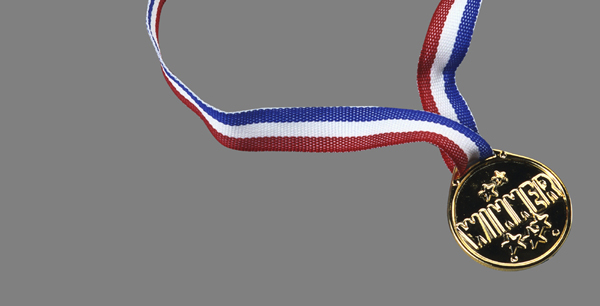Editor’s Note: For the past few weeks, we have been featuring a series of articles based in large part on Ardent Partners’ flagship research report, CPO Rising 2016: The Art and Science of Procurement (click to download). This benchmark report, sponsored by SAP Ariba, is based on the experiences of 331 Chief Procurement Officers and procurement practitioners. Today’s article is a preview of the report and features primary research data, analysis, and insight into current trends in procurement and supply management. Enjoy!
The supply side of trading-partner relationships has become increasingly vital to the health of an organization. How well a supplier performs, the value that they provide to the enterprise, and how much risk they present are all important considerations for business leaders. That is why it is imperative for Chief Procurement Officers (CPOs) and their teams to manage the performance of their supplier base to ensure that the enterprise receives the very best quality and service from the supplier and adheres to the contract. While low- or non-performing suppliers represent tangible risks to procurement and enterprise performance, high-performing suppliers can be true assets and partners that drive mutual success.
What is Supplier Performance Management? A Brief Review
About a week ago, Ardent Partners published a great overview of how source-to-settle solutions can help Chief Procurement Officers and their teams manage and leverage the high volume of supplier performance data residing within their organizations. Rather than completely rehash that article (which readers can find here), the following is a brief overview of SPM processes and tools.
SPM is the process of reviewing, rating, tracking, and developing/incentivizing a supplier’s performance with the goal of maintaining or improving it and mitigating the associated risks. At the outset of a trading-partner relationship, procurement and supplier management teams typically establish performance benchmarks, set key performance indicators (KPI), and create supplier codes of conduct that, in their own way, set expectations upon which the enterprise and the supplier agree. Having established benchmarks, KPIs, and codes of conduct, procurement/supply management teams follow their suppliers’ performance throughout the duration of the contract to ensure that the quality and quantity of goods and / or services that they receive are acceptable. If they are not, procurement either works with the supplier to improve their performance via performance improvement plans, or opts to “sunset” their contract (to let it expire), or decides to terminate the contract altogether.
To help Chief Procurement Officers and their teams manage all of this supplier data and information and make informed decisions, many of them leverage SPM tools, such as supplier scorecards, supplier surveys, and supplier management dashboards. Supplier scorecards allow managers to track suppliers against benchmarks, KPIs, and codes of conduct, while supplier surveys allow suppliers to share, in their own words, what their positions are on issues like corporate social responsibility, ethical sourcing, human rights, sustainability, and other humanitarian issues. And supplier dashboards enable Chief Procurement Officers and their teams to automatically aggregate all of this structured and unstructured performance data into a central location where they can monitor their suppliers’ performance, drill down on low- or non-performing suppliers, and receive alerts on a given supplier when they pass a certain threshold or when their performance poses a financial or reputational risk. Some dashboards allow practitioners to collaborate directly with their supplier base to monitor and / or improve their performance.
How the Best-in-Class Leverage SPM Programs and Tools for Superior Performance
For most procurement organizations, SPM is an area that remains on their radar screen but just out of the near-term scope. This is newer territory for the Best-in-Class, too. But, as leaders, they are still farther along in the development of their SPM programs, exceeding their peers in scope, maturity, and impact.
In 2016, the Best-in-Class are 83% more likely to have a supplier performance program (56% vs. 30%). Their adoption rates of these solutions have helped them achieve their head start. In fact, 65% of Best-in-Class procurement teams report having an automated SPM solution in place compared to just 25% of all other teams. This is 156% greater adoption of SPM tools than all other procurement teams – the widest gulf between the two maturity classes across the source-to-settle process.
Best-in-Class procurement teams gain tangible value from their investments in process improvement, training, and technology as they relate to SPM. Notably, their supplier programs are 43% more likely to have had an impact on overall business performance over the last three years. More specific benefits that correlate with greater SPM usage include:
- Greater realized savings – 7.7% vs. 6.9%
- More spend that is contract compliant – 69% vs. 54%
- More transactions that are contract compliant – 76% vs. 60%
Final Thoughts
Increasingly, enterprises are realizing that the competitive landscape requires strong partners and allies to succeed. Since some suppliers, particularly strategic suppliers, can have a direct impact on products and services, and therefore sales, more enterprises want to proactively, but efficiently, manage these relationships to improve performance. Best-in-Class procurement organizations have been leading the way towards a more hands-on approach to supplier performance management, both in their adoption of processes and their deployment of automated and digital tools to increase scale and efficiencies. These organizations have been seeing real benefit in terms of increased savings, greater compliance, and less risk from their supply base; and they are models for greater adoption across maturity classes.
RELATED ARTICLES
How Source-to-Settle Solutions Manage (and Leverage) Big Data – Supplier Performance Management
Supplier Performance Management: The Fourth Strategic Sourcing Pillar
Skills for the Modern Procurement Pro – Supplier Performance Management

